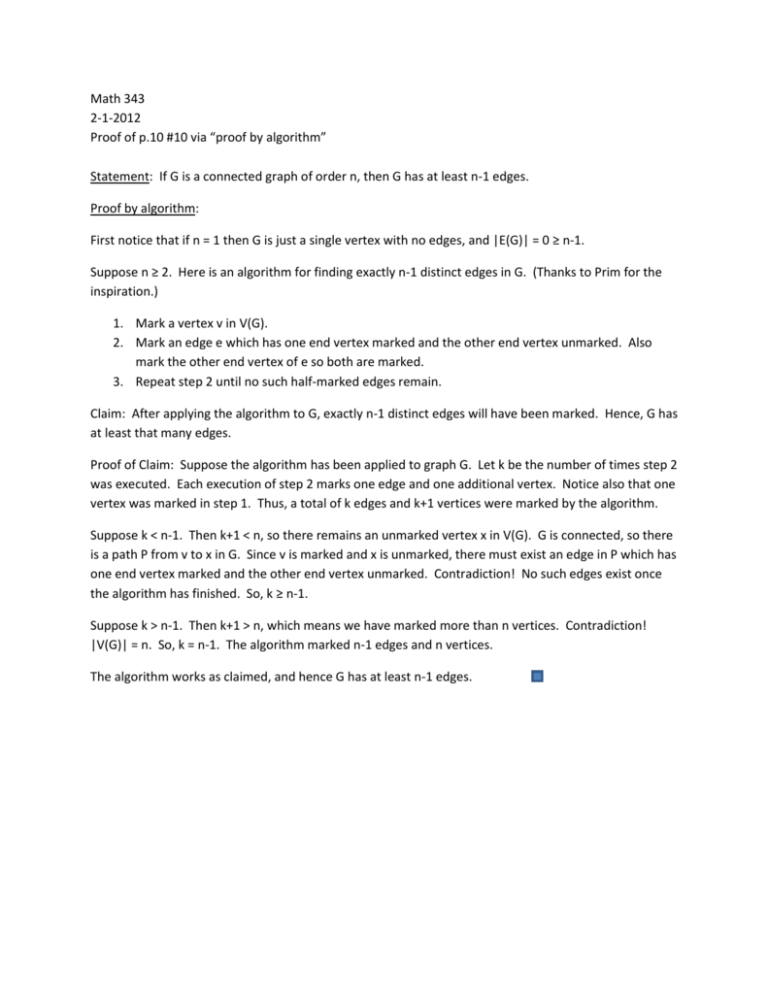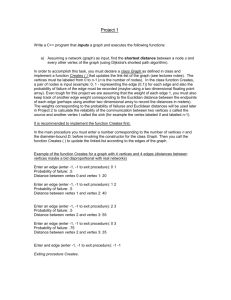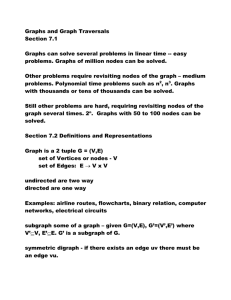Proof by algorithm (2-1-12)
advertisement

Math 343 2-1-2012 Proof of p.10 #10 via “proof by algorithm” Statement: If G is a connected graph of order n, then G has at least n-1 edges. Proof by algorithm: First notice that if n = 1 then G is just a single vertex with no edges, and |E(G)| = 0 ≥ n-1. Suppose n ≥ 2. Here is an algorithm for finding exactly n-1 distinct edges in G. (Thanks to Prim for the inspiration.) 1. Mark a vertex v in V(G). 2. Mark an edge e which has one end vertex marked and the other end vertex unmarked. Also mark the other end vertex of e so both are marked. 3. Repeat step 2 until no such half-marked edges remain. Claim: After applying the algorithm to G, exactly n-1 distinct edges will have been marked. Hence, G has at least that many edges. Proof of Claim: Suppose the algorithm has been applied to graph G. Let k be the number of times step 2 was executed. Each execution of step 2 marks one edge and one additional vertex. Notice also that one vertex was marked in step 1. Thus, a total of k edges and k+1 vertices were marked by the algorithm. Suppose k < n-1. Then k+1 < n, so there remains an unmarked vertex x in V(G). G is connected, so there is a path P from v to x in G. Since v is marked and x is unmarked, there must exist an edge in P which has one end vertex marked and the other end vertex unmarked. Contradiction! No such edges exist once the algorithm has finished. So, k ≥ n-1. Suppose k > n-1. Then k+1 > n, which means we have marked more than n vertices. Contradiction! |V(G)| = n. So, k = n-1. The algorithm marked n-1 edges and n vertices. The algorithm works as claimed, and hence G has at least n-1 edges.









